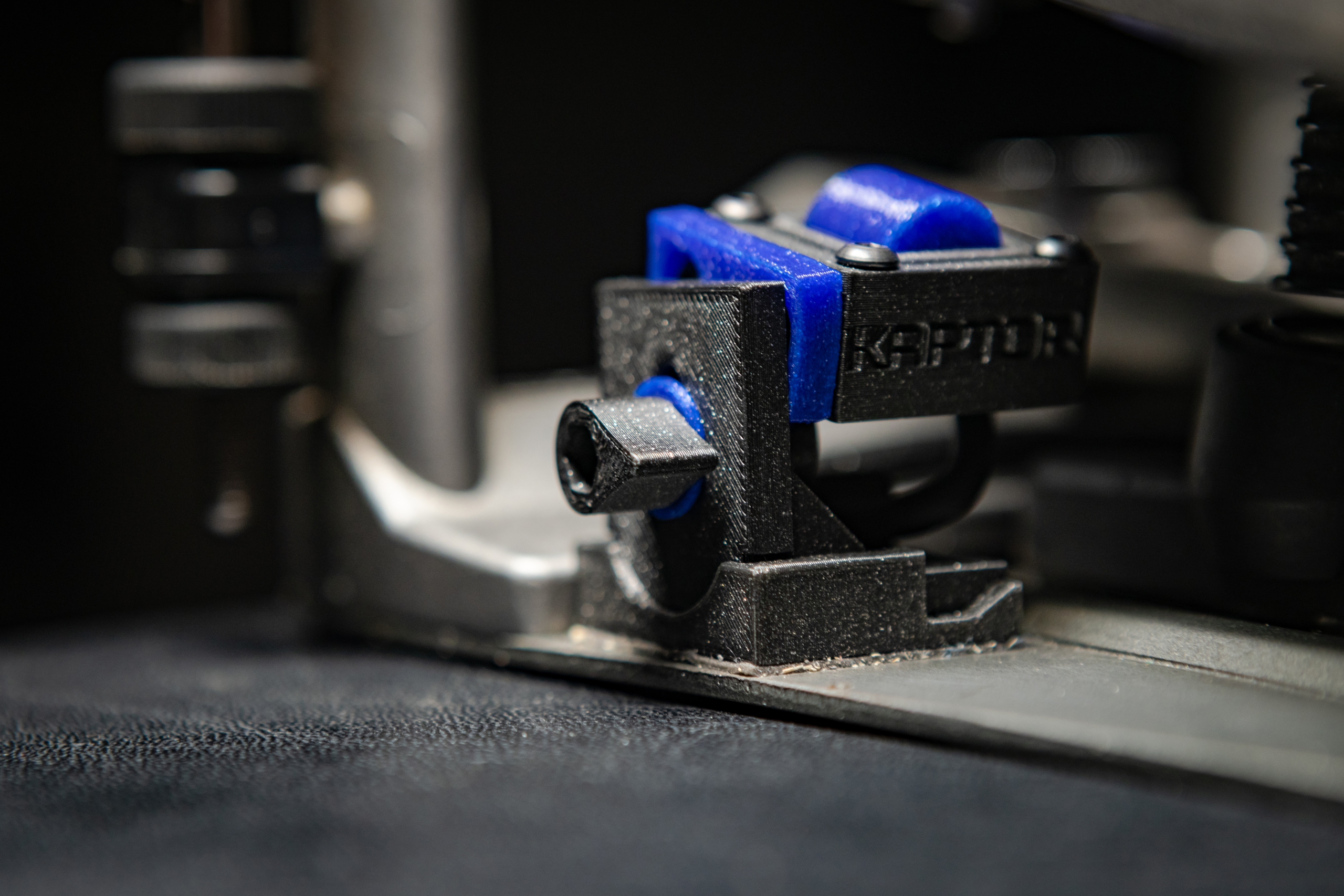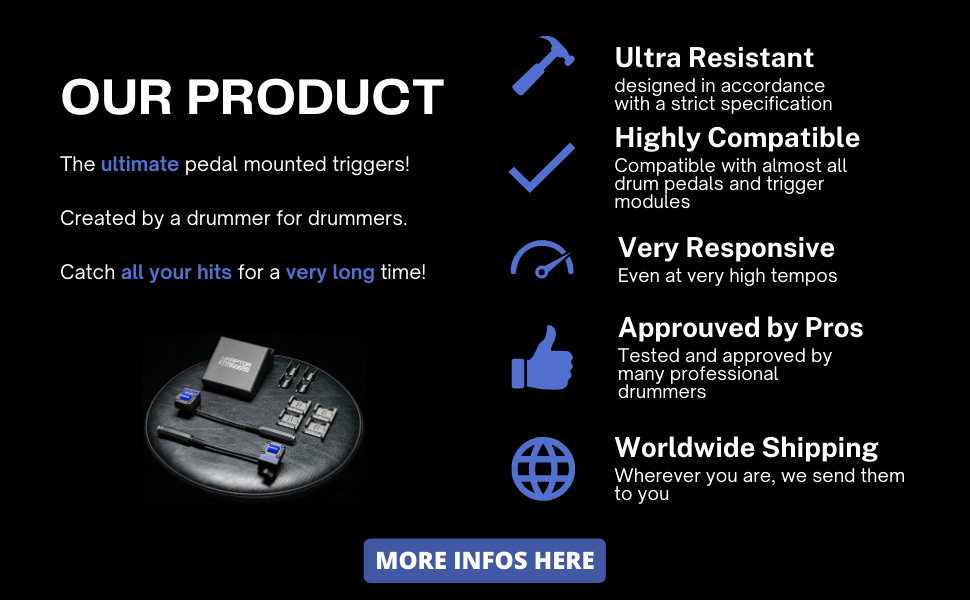What's a drum trigger?
Drum triggers have been an essential tool for drummers for decades.
The history of drum triggers dates back to the 1970s, when electronic drums were first developed. Early drum triggers were simple devices that converted the mechanical energy of a drum hit into an electrical signal that could be processed by electronic drum modules. In electronic, these components are called transducers.
In the 1980s, drum triggers became more widely used in recording studios, allowing drummers to add electronic sounds to their kits. This led to the development of advanced trigger systems such as Roland’s “Octapad” and “Trigger-to-MIDI” systems, which enabled drummers to trigger not only electronic sounds but also other MIDI-enabled instruments. By the 1990s, drum triggers had become a staple for many professional drummers and the technology continued to evolve.
Today, drum triggers come in various formats, from single-zone to multi-zone, and are used in many musical genres. Some of the most popular brands of drum triggers include Roland, Ddrum, Yamaha, Alesis among others. If you’re looking to enhance your drumming setup, consider adding drum triggers to your arsenal.
How does a drum trigger work?
When you hit a trigger, an electrical signal is generated. Then a device called Trigger Module receives this signal, processes it and converts it in two different ways.
Firstly, it can be converted to a pre-recorded audio sample, that you can set up in the trigger module. Then you can directly listen to this sound with headphones or send it to a mixer or to a speaker, for example.
Secondly, the module can generate a digital signal (USB or MIDI) that you can use to trigger a virtual instrument in your digital audio workstation (Cubase, Pro Tools, Reaper…) and record your drums.
Almost all triggers and trigger modules are sensitive to the dynamics of the hits. Therefore, the module can render a sample or a digital signal that corresponds to the strength of the hit. In the case of the audio sample, his volume is adjusted according to the intensity of the hit. For the digital signal, all the hits have velocity information which indicates their volume.
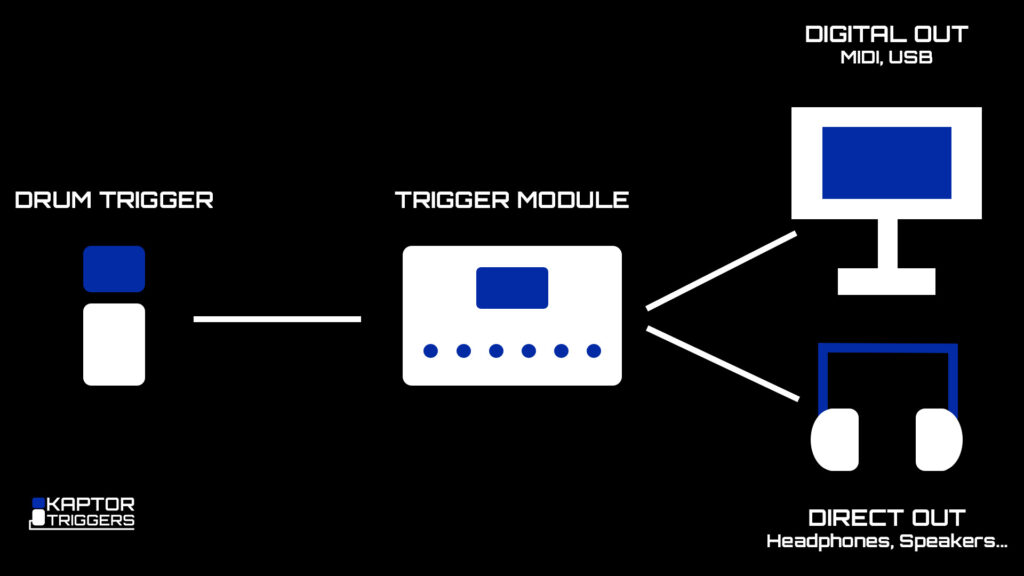
What's a trigger module?
A drum trigger module, also known as an electronic drum module or sound module, is a device that is used with electronic drum triggers to produce sound.
The trigger module receives the signal from the trigger and uses that information to play back a pre-recorded sound or generate a new sound.
Drum trigger modules can come in various formats, from standalone units to software that runs on a computer. They typically include various sounds, such as drums, cymbals, and percussion, that can be triggered by the electronic drum triggers. Some of the most popular brands of drum trigger modules are Roland, Alesis, Yamaha, and KAT Percussion, among others.
Most drum trigger modules allow for the user to customize the sound of the triggers and adjust various parameters such as volume, pitch, and sensitivity. Some more advanced modules may also include features such as built-in effects, the ability to import and edit samples, and the ability to create and store custom kits.
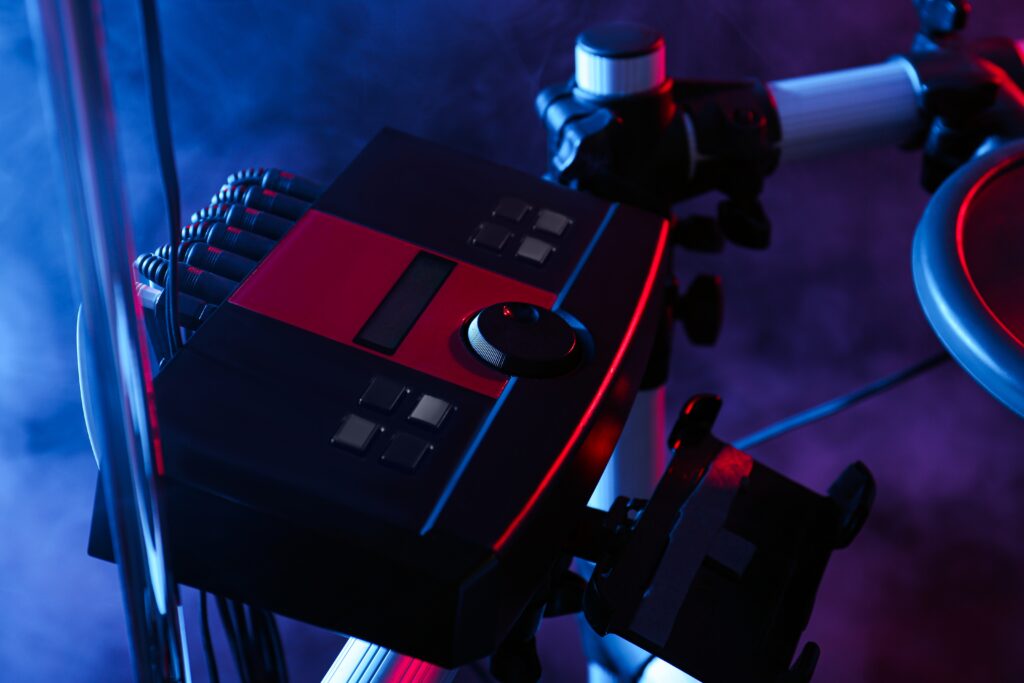
Different types of drum triggers.
Drum pads
Simply, all the pads of an electronic drum set are triggers. They exist in different sizes and different coatings (rubber head, or mesh head). They can have one or more hit areas (head and rim for a snare drum pad, for example). Furthermore, they’re made to correspond as closely as possible to the different elements of an acoustic drum set, whether in terms of feel or bounce.
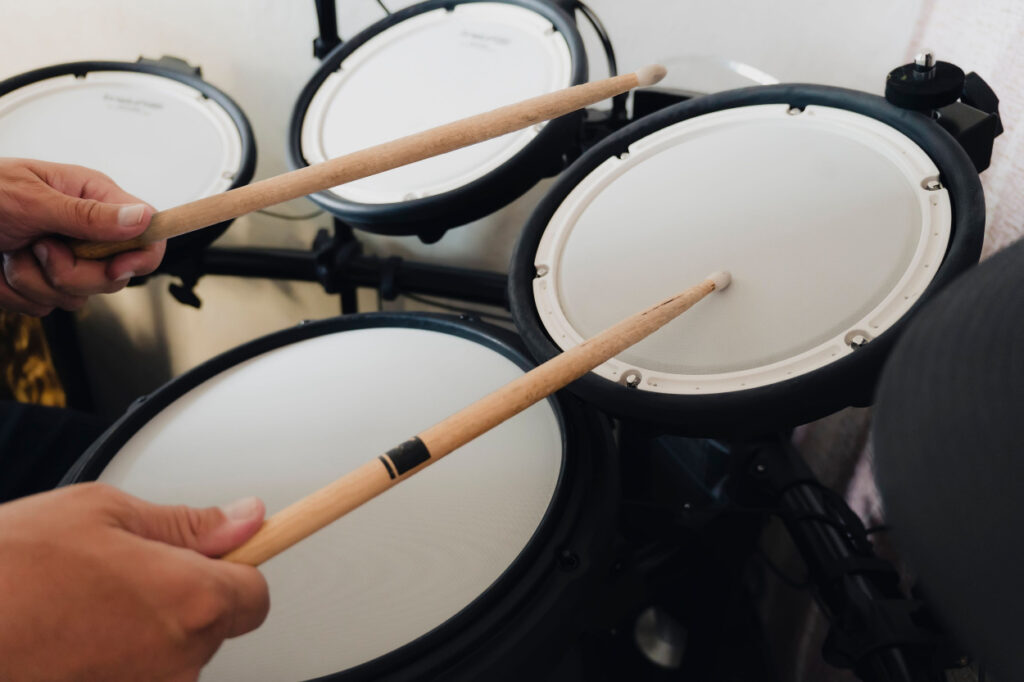
Head-mounted triggers
They’re built to be fixed on acoustic drum kits and trigger with the vibration of drum heads. We use them mainly on the snare drum, bass drum, and toms. They’re a suitable solution if you want to transform your acoustic drum kit into an electronic one or add samples to the natural sound of your drums.
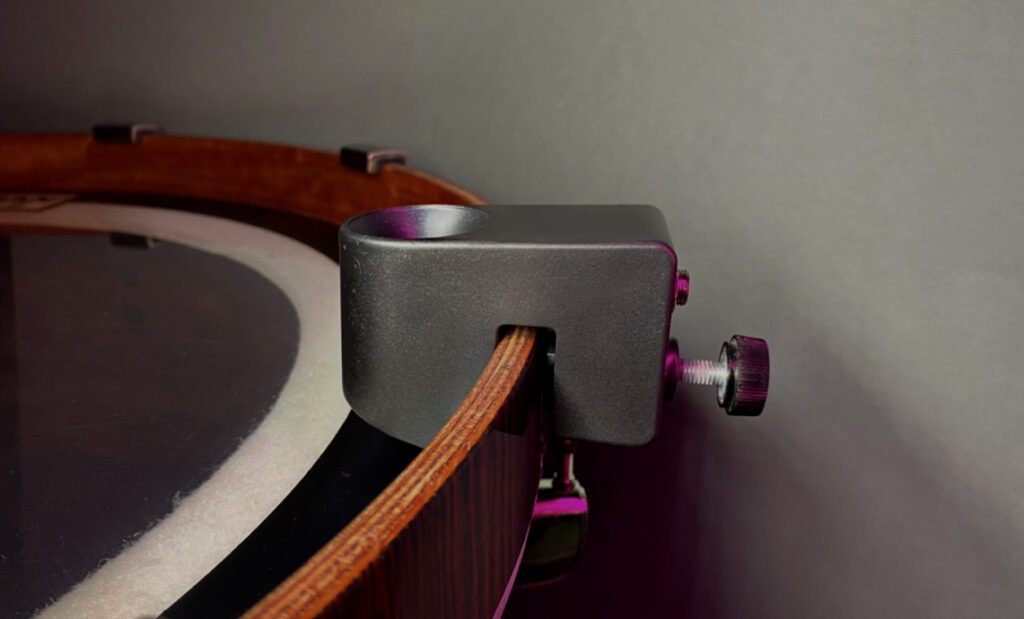
Pedal-mounted triggers
They’re made to be mounted on bass drum pedals and use the contact of the board of the pedal to trigger. They’re mostly used by extreme metal drummers who look for very precise and responsive triggers at high tempos. Their other advantage is that they don’t respond to unwanted vibrations of the drum kit itself, and they can be set up very sensitive without being miss triggered by these vibrations.
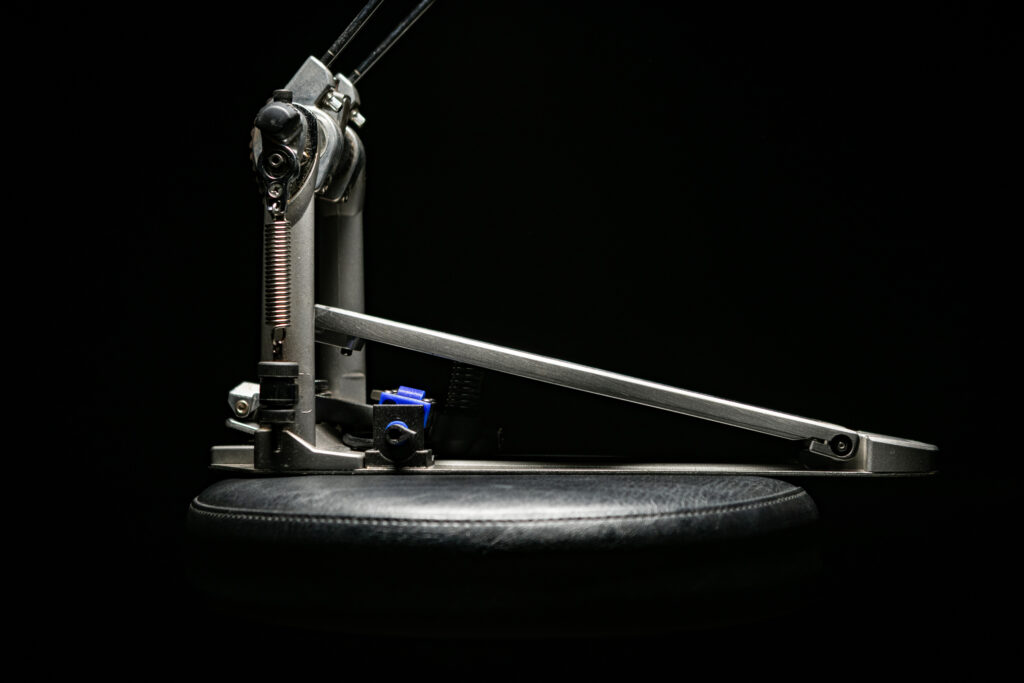
Sampling pads
It’s one device that integrates the module with the triggers. They can be built for playing them with drum sticks or simply with fingers. You can use them for adding extra sounds to an acoustic drum kit or to record patterns easily, for example.


